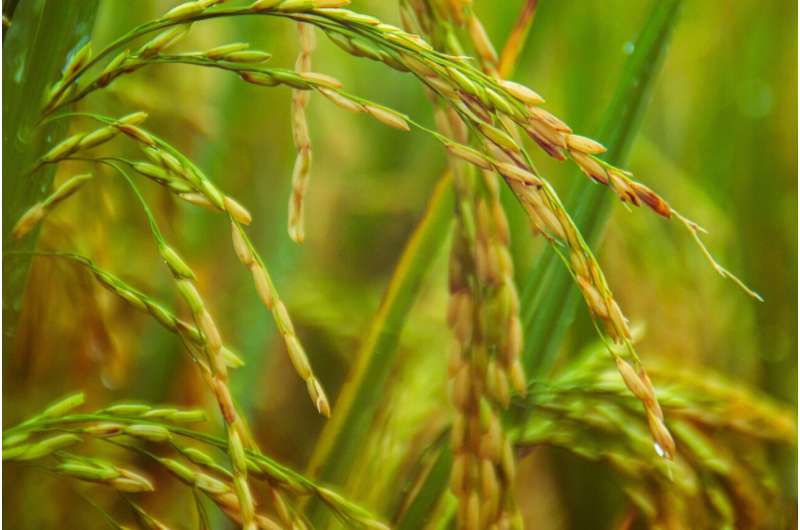New app identifies rice disease at early stages
Rice is one of the most important food crops for billions of people but the plants are susceptible to a wide variety of diseases that are not always easy to identify in the field. New work in the International Journal of Engineering Systems Modelling and Simulation has investigated whether an application based on a convolution neural network algorithm could be used to quickly and effectively determine what is afflicting a crop, especially in the early stages when signs and symptoms may well be ambiguous.
水稻是数十亿人最重要的粮食作物之一,但这种植物容易受到各种疾病的影响,在田间并不总是容易识别。《国际工程系统建模与仿真杂志》上的一项新工作研究了基于卷积神经网络算法的应用程序是否可以用于快速有效地确定是什么在折磨作物,特别是在迹象和症状可能很模糊的早期阶段。
Manoj Agrawal and Shweta Agrawal of Sage University in Indore, Madhya Pradesh, suggest that an automated method for rice disease identification is much needed. They have now trained various machine learning tools with more than 4,000 images of healthy and diseased rice and tested them against disease data from different sources. They demonstrated that the ResNet50 architecture offers the greatest accuracy at 97.5%.
位于中央邦印多尔市的Sage大学的Manoj Agrawal和Shweta Agrawal认为,非常需要一种水稻病害识别的自动化方法。他们现在已经用4000多张健康和患病大米的图像训练了各种机器学习工具,并将它们与来自不同来源的疾病数据进行了测试。他们证明,ResNet50架构提供了最高的准确度,达到97.5%。
The system can determine from a photograph of a sample of the crop whether or not it is diseased and if so, can then identify which of the following common diseases that affect rice the plant has: Leaf Blast, Brown Spot, Sheath Blight, Leaf Scald, Bacterial Leaf Blight, Rice Blast, Neck Blast, False Smut, Tungro, Stem Borer, Hispa, and Sheath Rot.
该系统可以根据作物样本的照片确定它是否患病,如果患病,就可以确定影响该作物的下列常见疾病:叶枯病、褐斑病、叶枯病、叶烫病、细菌性叶枯病、稻瘟病、颈瘟病、假黑穗病、通格罗病、螟虫病、Hispa病和叶枯病。
Overall, the team’s approach is 98.2% accurate on independent test images. Such accuracy is sufficient to guide farmers to make an appropriate response to a given infection in their crop and thus save both their crop and their resources rather than wasting produce or money on ineffective treatments.
总体而言,该团队的方法在独立测试图像上的准确率为98.2%。这种准确性足以指导农民对作物中的特定感染做出适当的反应,从而节省作物和资源,而不是在无效的治疗上浪费农产品或金钱。
The team emphasizes that the system works well irrespective of the lighting conditions when the photograph is taken or the background in the photograph. They add that accuracy might still be improved by adding more images to the training dataset to help the application make predictions from photos taken in disparate conditions.
该团队强调,无论拍摄时的照明条件或照片中的背景如何,该系统都能很好地工作。他们补充说,通过向训练数据集中添加更多的图像来帮助应用程序从不同条件下拍摄的照片中做出预测,准确性仍可能得到提高。
Read More at Phys.org
更多信息请访问Phys.org











